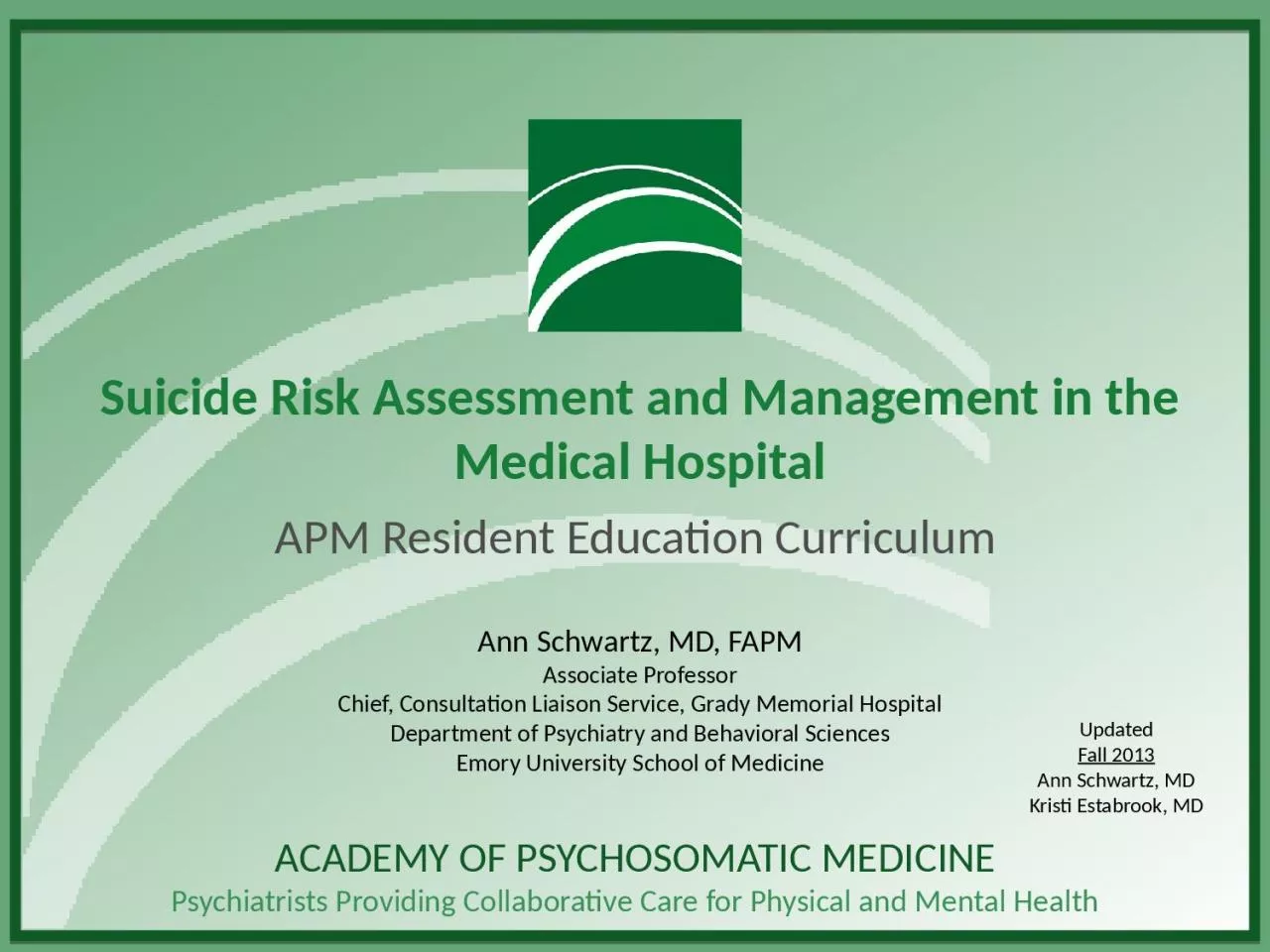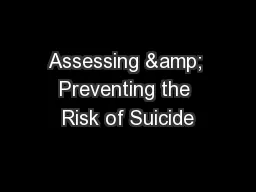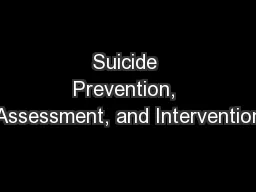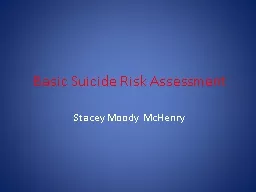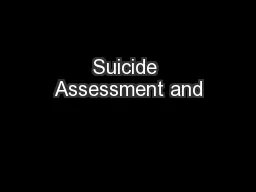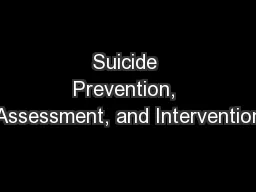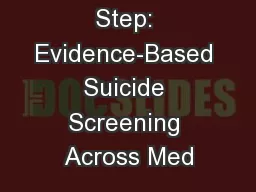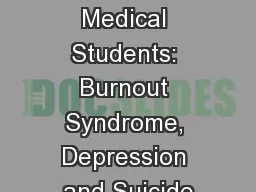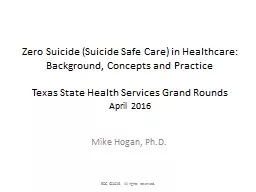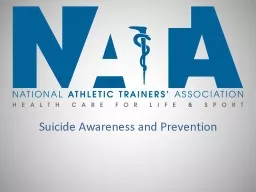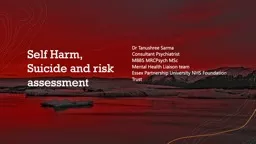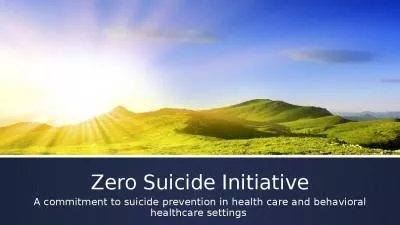PPT-Suicide Risk Assessment and Management in the Medical Hospital
Author : sophia | Published Date : 2023-07-23
APM Resident Education Curriculum Ann Schwartz MD FAPM Associate Professor Chief Consultation Liaison Service Grady Memorial Hospital Department of Psychiatry and
Presentation Embed Code
Download Presentation
Download Presentation The PPT/PDF document "Suicide Risk Assessment and Management i..." is the property of its rightful owner. Permission is granted to download and print the materials on this website for personal, non-commercial use only, and to display it on your personal computer provided you do not modify the materials and that you retain all copyright notices contained in the materials. By downloading content from our website, you accept the terms of this agreement.
Suicide Risk Assessment and Management in the Medical Hospital: Transcript
Download Rules Of Document
"Suicide Risk Assessment and Management in the Medical Hospital"The content belongs to its owner. You may download and print it for personal use, without modification, and keep all copyright notices. By downloading, you agree to these terms.
Related Documents

